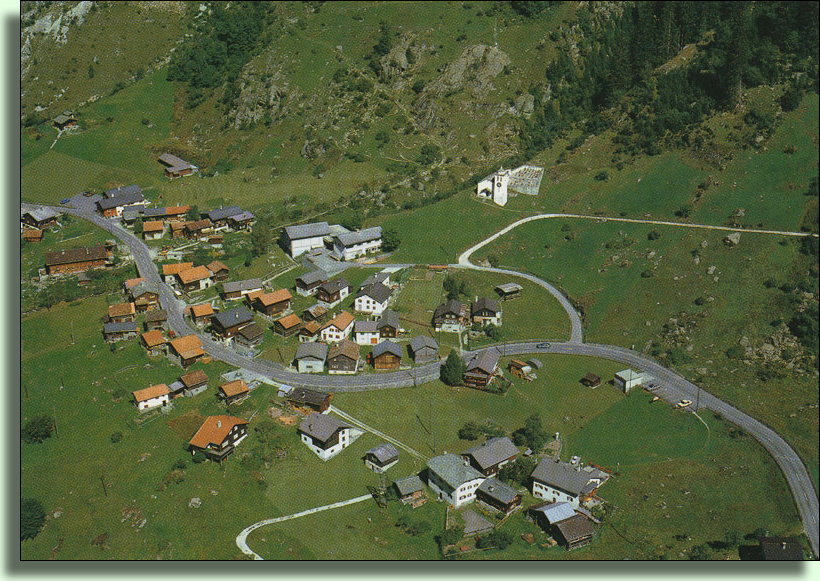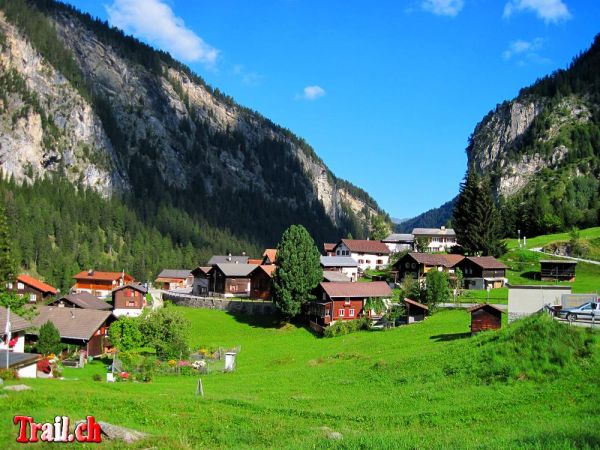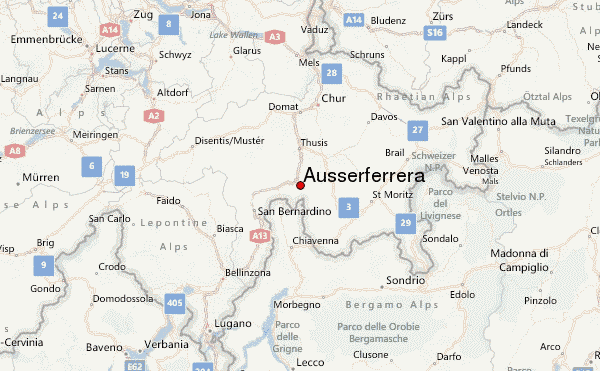Ausserferrera
Ausserferrera
Ausserferrera (Romansh Farera and Feraila ) is a fraction of the community Ferrera GR in the south of the district Hinterrhein the canton of Graubünden in Switzerland. On 1 January 2008 it was merged with the municipality to municipality Innerferrera Ferrera.
Coat of arms
Description: Argent, a right diagonal asked black mountain man hammer. The eminent in addition to and Innerferrera mining led to the election of the Bergmann hammer as crest motif for both communities in the colors of the Grey League.
Geography
Except Ferrera is on Avers Rhine ( Romansh: Ragn since Ferrera ) in Val Ferrera. The village consists mostly of old wooden houses. On a terrace 350 m above the village is inhabited only in summer settlement Cresta. On the left side of the valley and the municipal area extends up to 2,855 m high Hüreli, on the right side of the valley up to 3060 m high Piz Grisch. 50% of the local area are unproductive forested, 20 % and 29 % is used for agriculture.
Name
Except Ferrera, Romanesque Farera, takes its name from the previously operated here iron mines (Latin: Ferraria ).
Geology
The rock walls at Ausserferrera are from the Penninic rocks of the Suretta - ceiling, in particular from Rofna gneiss - formed - a porphyry gneiss. In the Rofna gneiss Triassic sedimentary rocks are wedged. The latter are below the village Ausserferrera as dolomite and pull up against Cresta. The village Ausserferrera is up a steep debris flow alluvial fan.
History
The early history of Ausserferrera was influenced by the ore mining industry. Since the 16th century was mined ore proved to have. In the 19th century mining was most intense. It was promoted silver-containing copper ore, of which the remains of a smelting furnace testify below Ausserferrera. As a result of mining and smelting the valley was largely deforested.
In the 20th century the development was marked by the construction of electric power plants in the back of the Rhine area. During the work a multiple of people lived in the valley in addition. Today, the community is still benefiting from the water rates of the power plants Rhine.
Population
Demographics
The population development of Ausserferrera reflects the steady exodus from the mountain region. An upheaval experienced the village in 1850, thanks to the mining industry and in 1960 with the construction of power plants.
Languages
The community was settled in the 11th century by Grison novels. The residents spoke Sutselvisch. Until 1900 the town was almost monolingual (1880 98.4 %, 1900 98.13 % novels ). By 1950 Romanesque could hold as the majority language (1941 58 8%). Then began a slow language change. Since 1970, the German is the most important language. In the 1990s, began a complete language change, as the following table shows:
German is now only bureaucratic language, although still 23.4 % of the population understand Romansh.
Origin and nationality
From the end of 2005, 49 residents were 45 ( = 91.84 %), Swiss nationals.
Culture and sights
The Reformed village church of Ausserferrera comes - with the exception of possible components of the 15th century - from 1718 in the Terrassensiedelung Cresta is the oldest branch church of the valley.. It was probably built around 1200.
Economy and infrastructure
Ausserferrera provides few jobs in the agriculture and forestry as well as in service industries. The village is connected by Postbus courses with the main town of the district Shams Andeer.









